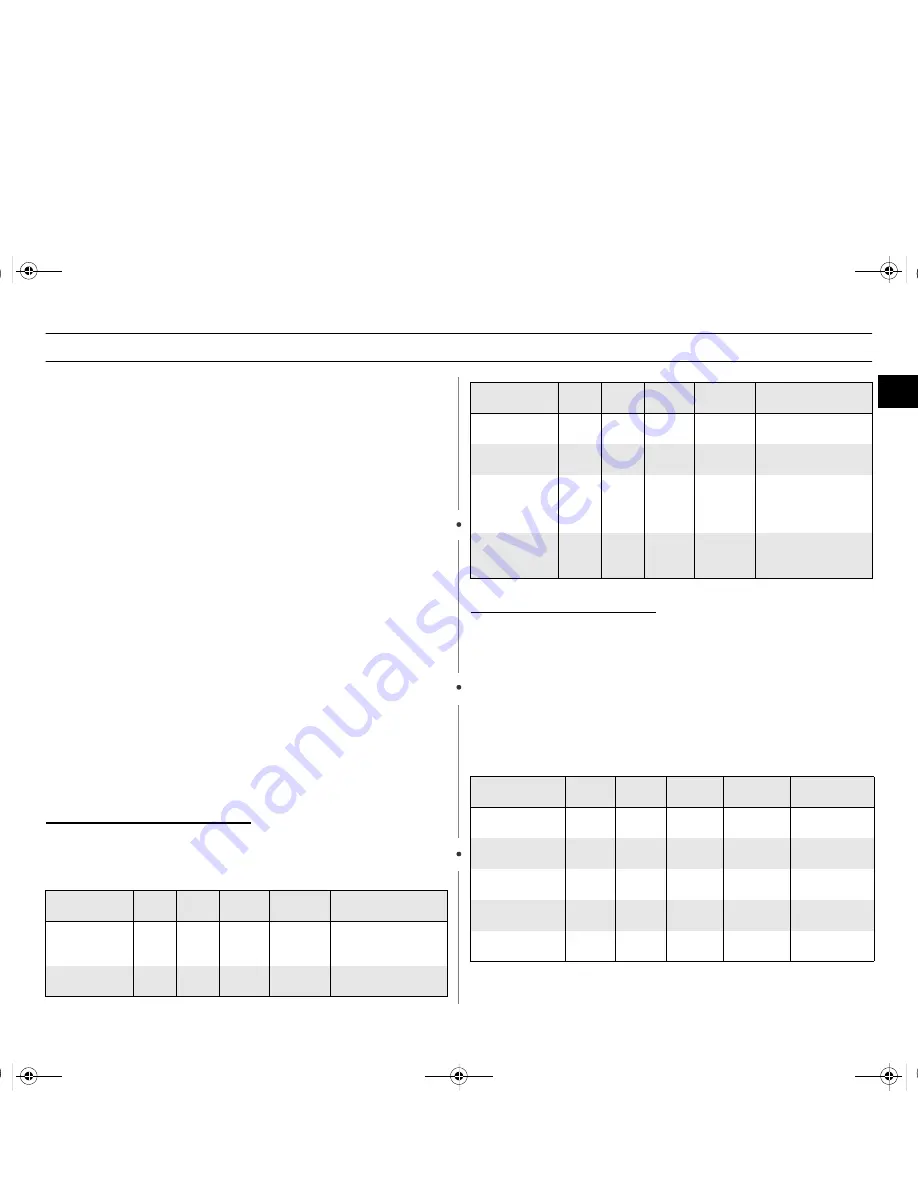
9
GB
Cooking Guide
MICROWAVES
Microwave energy actually penetrates food, attracted and absorbed by its water,
fat and sugar content.
The microwaves cause the molecules in the food to move rapidly. The rapid
movement of these molecules creates friction and the resulting heat cooks the
food.
COOKING
Cookware for microwave cooking:
Cookware must allow microwave energy to pass through it for maximum
efficiency. Microwaves are reflected by metal, such as stainless steel, aluminium
and copper, but they can penetrate through ceramic, glass, porcelain and plastic
as well as paper and wood. So food must never be cooked in metal containers.
Food suitable for microwave cooking:
Many kinds of food are suitable for microwave cooking, including fresh or frozen
vegetables, fruit, pasta, rice, grains, beans, fish, and meat. Sauces, custard,
soups, steamed puddings, preserves, and chutneys can also be cooked in a
microwave oven. Generally speaking, microwave cooking is ideal for any food
that would normally be prepared on a hob. Melting butter or chocolate, for
example (see the chapter with tips, techniques and hints).
Covering during cooking
To cover the food during cooking is very important, as the evaporated water rises
as steam and contributes to cooking process. Food can be covered in different
ways: e.g. with a ceramic plate, plastic cover or microwave suitable cling film.
Standing times
After cooking is over food the standing time is important to allow the temperature
to even out within the food.
Cooking Guide for frozen vegetables
Use a suitable glass pyrex bowl with lid. Cook covered for the minimum time - see
table. Continue cooking to get the result you prefer.
Stir twice during cooking and once after cooking. Add salt, herbs or butter after
cooking. Cover during standing time.
Cooking Guide for rice and pasta
Rice:
Use a large glass pyrex bowl with lid - rice doubles in volume during
cooking. Cook covered.
After the cooking time is over, stir before standing time and salt or
add herbs and butter.
Remark: the rice may not have absorbed all water after the cooking
time is finished.
Pasta:
Use a large glass pyrex bowl. Add boiling water, a pinch of salt and
stir well. Cook uncovered.
Stir occasionally during and after cooking. Cover during standing
time and drain thoroughly afterwards.
Food
Portion Power
Time
(min.)
Standing
Time(min.)
Instructions
Spinach
150g
600W
5½-6½
2-3
Add 15 ml (1
tablespoon) cold
water.
Broccoli
300g
600W
10-11
2-3
Add 15 ml (1 tbsp.)
cold water.
Peas
300g
600W
8-9
2-3
Add 15 ml (1 tbsp.)
cold water.
Green Beans
300g
600W
10-11
2-3
Add 15 ml (1 tbsp)
cold water.
Mixed
Vegetables
(carrots/peas/
corn)
300g
600W
9-10
2-3
Add 15 ml (1 tbsp.)
cold water.
Mixed
Vegetables
(Chinese style)
300g
600W
8½-9½
2-3
Add 15 ml (1 tbsp)
cold water.
Food
Portion
Power
Time
(min.)
Standing
Time(min.)
Instructions
White Rice
(parboiled)
250g
750W
17-18
5
Add 500 ml
cold water.
Brown Rice
(parboiled)
250g
750W
22-23
5
Add 500 ml
cold water.
Mixed Rice
(rice + wild rice)
250g
750W
18-19
5
Add 500 ml
cold water.
Mixed Corn
(rice + grain)
250g
750W
19-20
5
Add 400 ml
cold water.
Pasta
250g
750W
11-12
5
Add 1000 ml
hot water.
Food
Portion Power
Time
(min.)
Standing
Time(min.)
Instructions
G2719N_GB.fm Page 9 Thursday, February 7, 2002 1:11 PM


































